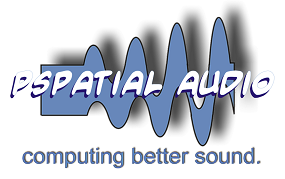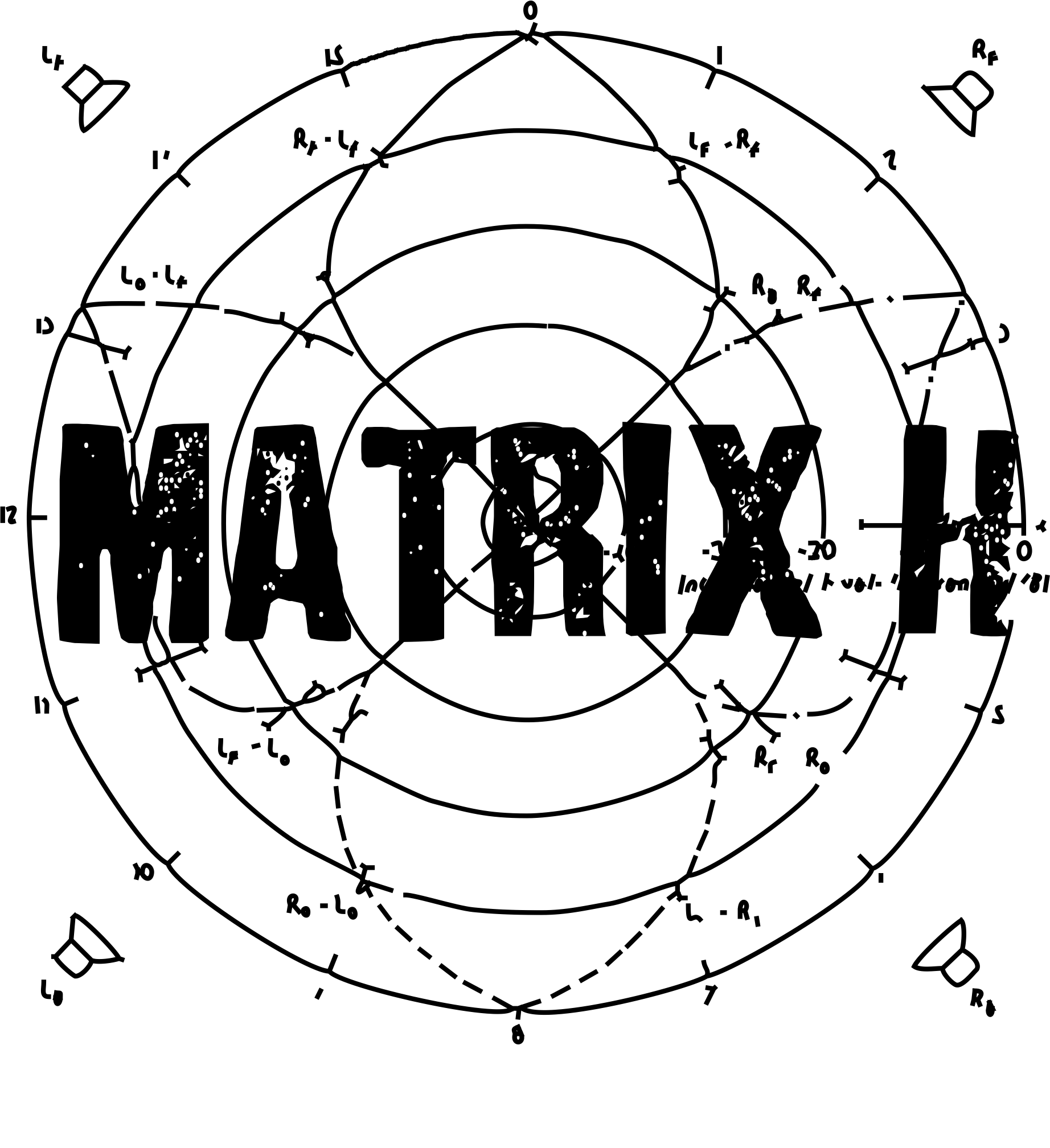
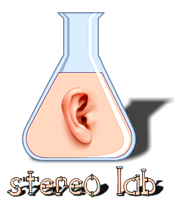

Matrix H was developed by BBC engineers in the late 1970s to carry quadraphonic sound via FM radio in a way that would be most compatible with existing mono and stereo receivers.
Few recordings were officially released in Matrix H, but the BBC organised, in all, a twenty month-long series of broadcasts of all genres from August 1976 to April 1978 in the format and many amateur recordings exist of these broadcasts.
See this page for a list of the broadcasts made by the BBC in Matrix H.
Essentially another phase-amplitude matrixing technique, Matrix-H may be thought of as QS with added rotation; a sort of hybrid of Sansui QS and CBS SQ. This fusion is justified by the argument that a certain "phasiness" in the front (stereo) image was a tolerable price to pay for the lack of cancellation of rear images for listeners with mono radios¹. Such a consideration was important for a national broadcaster - especially in the 1970s.
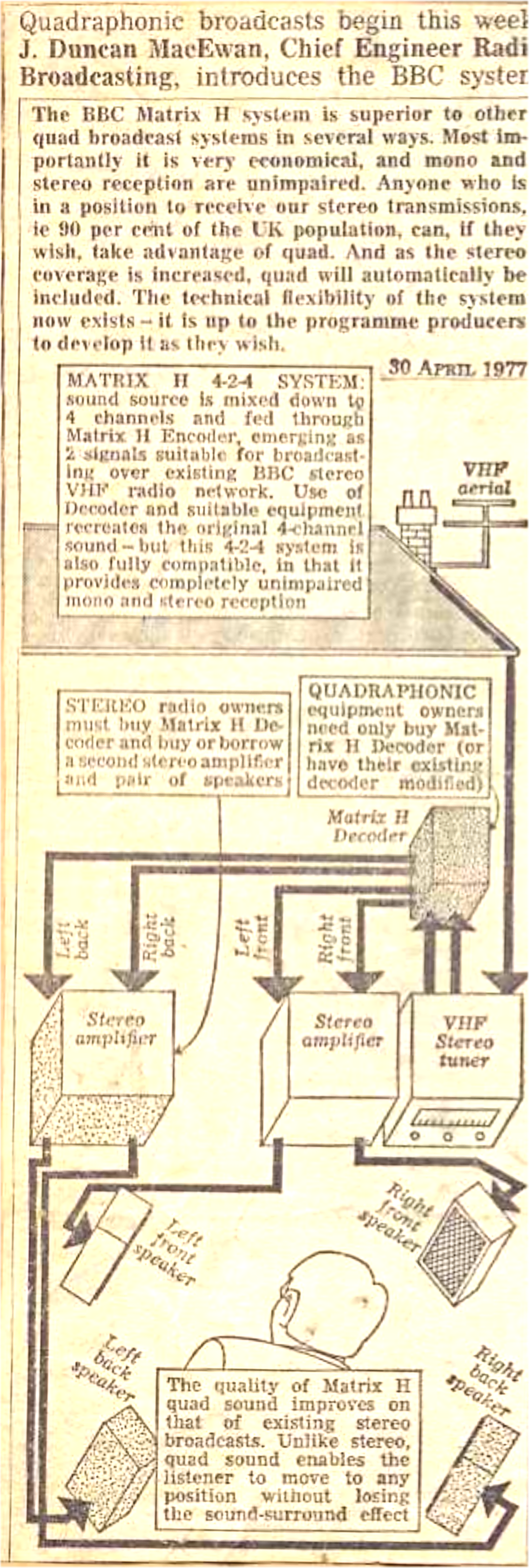
Stereo Lab (version 3.1.14 and above) provides accurate decoding of BBC Matrix H recordings so that they can be played over a modern 5.1 system - as defined in ITU-R BS 775 (although better results are obtained if the angle between the surround loudspeakers is reduced).
The encoded input file should be Matrix H encoded, two-channel stereophonic derived from the LP or tape replay (or other source). The output may be selected to be separate mono files (useful if you want to re-encode in DTS for example), as a group of stereo files encoded:
Or the output may be encoded as a multi-channel, 5.1 file. Note that, because these signals are quadraphonic (four-channel), the Center and LFE channels are silent.
Whilst we don't need to go as far as Morpheus, it's probably true to say that what the quadraphonic market didn't need by 1976 (the date after which both the major record companies and the electronics giants were bailing-out of the sickly quad' market²) was a further, incompatible quadraphonic system.
Introduced into Britain by the BBC just as the country's post-war planned-economy project was running out of steam and the country was poised to slump into recession and the winter of discontent, the tale of Matrix H is a Kafka-esque story of incomprehensible bureaucracy.
This is visible in the starkest terms in that, despite the BBC's efforts on the engineering and production side, Matrix H was denied a listenership because no commercial decoder was available for these broadcasts - at least at the start of broadcasting³.
There exists an almost surreal clipping from the Radio Times magazine in April 1977 (right), written by the BBC's Chief Engineer Radio Broadcasting showing the delighted radio listener how to enjoy these BBC quadraphonic broadcasts. Our carefree (male) listener is told to connect his radio to his quadraphonic system via a shadowy, grey box labelled Matrix-H decoder - a device which didn't exist and which our radio enthusiast couldn't have bought even if he wanted to!
The final chapter of the Matrix H story is its fusion with the System 45J from the Ambisonics team. At best this was a marriage of convenience. (Contemporary accounts speak of the hostility between the BBC Matrix H and Ambisonic teams7.) The National Research and Development Corporation - the quango established by the British Government to transfer technology from the public sector to the private sector - must have, by this time, been searching hard for somewhere they could land their seven years of investment in Ambisonics before the quadraphonic market collapsed altogether. And, as we have seen, the BBC was desperately in need of decoding technology to make its efforts on the production side worthwhile.
Matrix H had been derived largely from empirical work by the BBC, whereas System 45J had largely been born of theoretical work. Michael Gerzon, Ambisonics principal architect spoke of "40 pages of mathematics..." 6, to derive the System 45J's parameters.
Happily, despite their different rational vs. empirical origins, System 45J and Matrix H converged toward almost identical designs. So similar that it would only have taken a few simple modifications to a Matrix H encoder to make it into a System 45J encoder. In practice, it is impossible to tell if a recording is encoded in H or HJ as small production or reception changes (for example, the choice of different microphones, or an error of 20° in the phase of the recovered subcarrier in the stereo decoder) would easily change the encoded performance more substantially than the change in encoder. David Mears of the BBC (and joint author of the original Matrix H EBU paper)¹ is quoted as saying that, he couldn't tell the difference between an HJ encoding and an H encoding through an H decoder 7.
The tragedy of the story of Matrix H (HJ) is that the sytem worked well, and the BBC radio productions (including pretty much an entire Henry Wood Promenade season) provided a wealth of material in the format.
As far as we are aware, Stereo Lab is the only commercial decoder³ ever available for this quadraphonic format..... Just 42 years late! Pspatial Audio would like to acknowledge Martin Pipe for the motivation for, and help with, the development of the BBC Matrix H decoder.
These two demos are from the album Instructions For Angels by the British composer David Bedford which is which one of very few albums released in the UK in Matrix H quadraphonic. It was the first album of an abandoned series of quadraphonic albums planned by Virgin Records. The sixth variation of the piece, this excerpt features a guitar improvisation by Mike Oldfield. The original Matrix H signal is decoded to a multitrack FLAC file. You will probably need to download this file and play in a multichannel application (like Audacity) unless your PC is configured for multichannel sound. (Some browsers will not play FLAC files).
The second example is from the fifth variation entitled First Came The Lion Rider. This excerpt features a steady rhythmic figure (in 5/4 time) played on piano and bass-synth in the front two channels with the two alternating sythesiser melody lines in each of the rear speakers. The original Matrix H signal is decoded to a multitrack FLAC file. Once again, you will probably need to download this file and play in a multichannel application (like Audacity) unless your PC is configured for multichannel sound. (Some browsers will not play FLAC files).
There was some contemporary criticism of the stereo compatibility of BBC Matrix H, especially of some of the 1977 Prom season concerts7. The BBC issued a statement that Matrix H which conceded that stereo broadcasts, once claimed to be "completely unipaired" (see Radio Times article above), could no longer be described in those words7.
From our point of view, there is some justification in these criticisms: it is true that Matrix H encoded signals do sound a bit "phasey" in stereo. In fact, the mono compatibility of Matrix H is rather better than its stereo compatibility. BBC Radio 2, 3 and 4 had only been converted to stereo broadcasting in 1973, and and thus the BBC's principal concern must have been for the installed base of listeners in mono who must have far outnumbered stereo listeners a scarce four years later.
It's possible greatly to remove the "phasey" quality of Matrix H recordings in stereo by using the Stereo Lab decoder to decode to front-pair only. Obviously, there is loss of the rear information in so doing, but this can be an advantage too as there is often rather too much ambience in the quadraphonic signal.

UD-4 was a discrete four-channel quadraphonic sound system for phonograph records invented by Duane Cooper of the University of Illinois and Takeo Shiga of the Nippon Columbia Company in Japan.
UD-4 was introduced commercially by Nippon Columbia (Denon) in 1974. This was already late to quadraphonic's flagging party and only about 30 LP album titles were encoded in this format on the Denon label. Unlike the other quadraphonic systems, UD-4 was marketed only in Europe and Japan.
UD-4 records are able to be decoded two ways: 1) via a basic matrix (BMX) decoder; or 2) by using extra information encoded on high-frequency subcarriers (like JVC's CD-4) to enhance directional resolution in a heirarchical decoder.
For the present time, Stereo Lab supports basic matrix (BMX) decoding: Appendix 1 covers our work towards hierachical decoding using the ultrasonic carriers recorded on UD-4 discs.
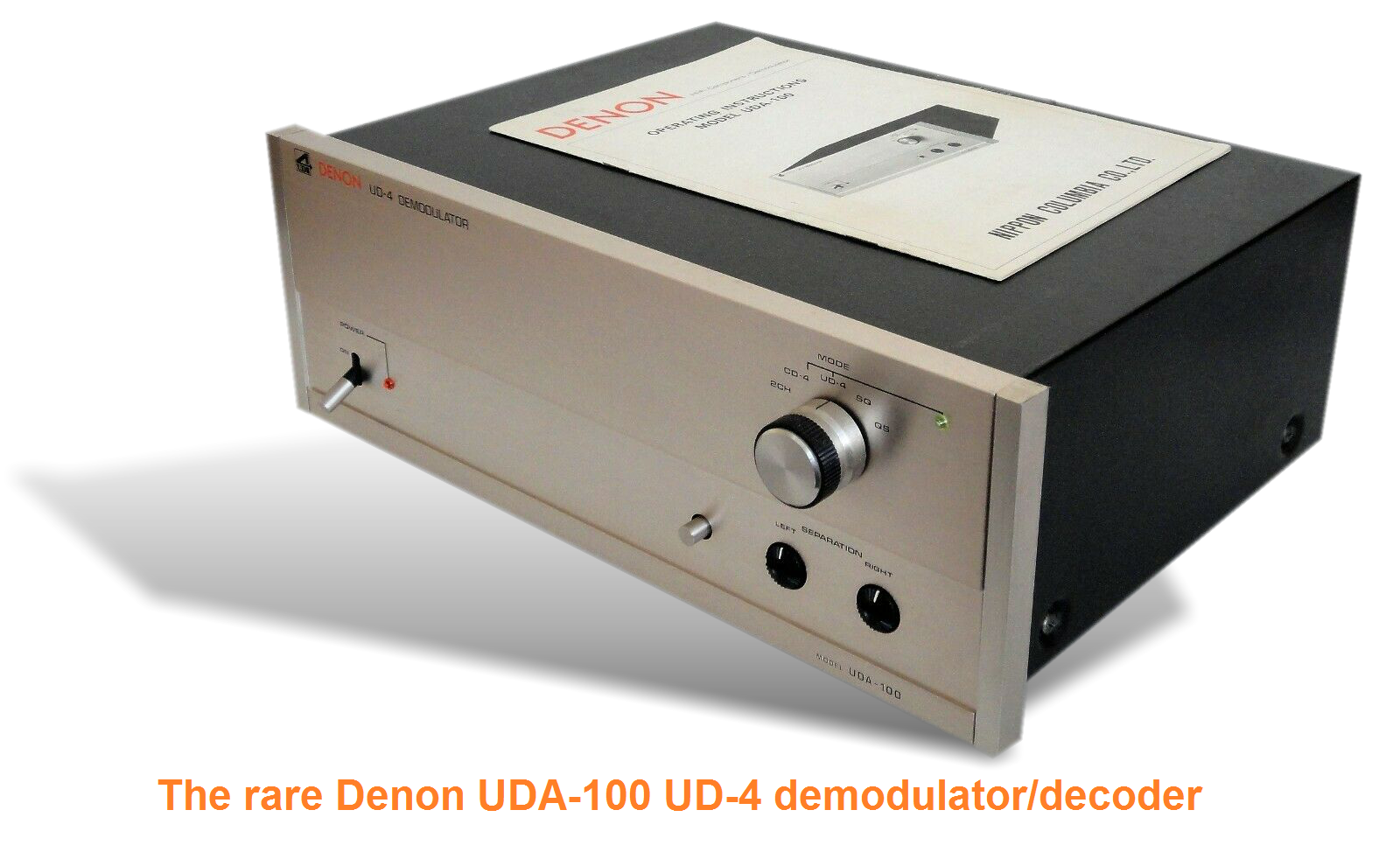 Michael Gerzon pointed out5 that Matrix H will decode existing BMX discs (e.g. the UD-4 discs of Nippon Columbia) with reasonably accurate results. So, use Stereo Lab Matrix H decoding if confronted with one of these rare quadraphonic UD-4 discs.
Michael Gerzon pointed out5 that Matrix H will decode existing BMX discs (e.g. the UD-4 discs of Nippon Columbia) with reasonably accurate results. So, use Stereo Lab Matrix H decoding if confronted with one of these rare quadraphonic UD-4 discs.
As an example of this, we have provided the following 5.1 FLAC file of a BMX decode of a track from the disc J.S. Bach Brandenburg Concertos No. 5, 2, and 3, Orchestre de Chambre, Jean-Francois Paillard, DENON 4OX-9001-N, Nippon-Columbia Ltd. (Issued 1974). The original needle-drop of this rare disc was kindly provided to us by Andrew Birt.
The original UD-4 signal is decoded to a multitrack FLAC file. You will probably need to download this file and play in a multichannel application (like Audacity) unless your PC is configured for multichannel sound. (Note that some browsers will not play FLAC files).
UD-4 discs have very poor stereo compatibility (see Matrix H (HJ) to stereo section above). Therefore, even if a quadraphonic dub is not required of a UD-4 record, the Stereo Lab Matrix H decoder may be used to generate a good stereo version by decoding to the front-pair only.
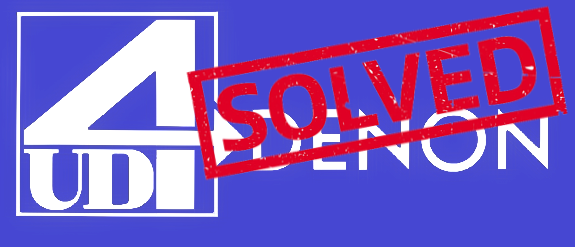
After a long gestation, see Appendix 1, Pspatial Audio has discovered how to decode UD-4 records to the all important Tertiary decode level.
The same example given above for matrix decode is decoded in a prototype heirarchical decoder in the FLAC file provided below. Once again, you will probably need to download this file and play in a multichannel application (like Audacity) unless your PC is configured for multichannel sound. (Note that some browsers will not play FLAC files at all).
The results are considerably better than those obtained using a simple (BMX) basic matric decoder. The work involved in developing this prototype decoder is chronicled in Appendix 1.
Pspatial Audio could include the UD-4 heirachical demodulator in Stereo Lab. But the sad fact is that the UD-4 repertoire is tiny and the scarcity of these discs lends them an inflated value despite their irregular artistic value. Any UD-4 LP is expensive, and a good copy of the Denon's most prestigious UD-4 issue, Mike Oldfield's Tubular Bells, retails for $2000.00 (November 2019).
UD-4 is a is an esoteric avocation.
Before we invest development time and effort in including the UD-4 heirachical demodulator, we need to know if there is there any call for this functionality. Especially given that the BMX decode is available in Stereo Lab already. If you would like to see an advanced heirachical UD-4 decoder in Stereo Lab, please let us know.
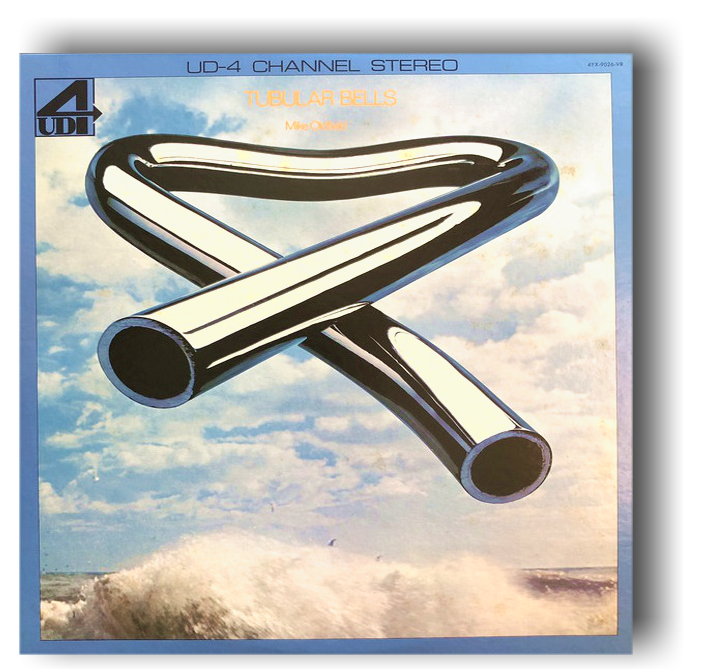
Matrix decoding (using the Matrix-H decoder in Stereo Lab) may be regarded as the baseline decode for UMX encoded UD-4 discs. To understand how the basic matrix decode can be enhanced, it is necessary to explore Cooper's ideas more fully.
Inherent in the UD-4 concept is Duane Cooper's idea of hierarchical encoding and decoding in which the Basic matrix system (BMX) is augmented by a third signal to produce a Tertiary matrix (TMX) and a fourth to make a Quaternary matrix (QMX). Each of these steps enhances the fidelity to the quadraphonic effect4; the entire heirarchy of being termed Unified Matrix Theory or UMX.
Ignoring here the panning of synthetic signals in the UMX system (which Cooper and Shiga did expound fully4), the capture of real sound-fields in UMX reveals most clearly the connection with the British Ambisonics system. Audio journalist Adrian Hope writing about UD-4 in British science magazine New Scientist in 1975 said,
The UD4 system is best described as a hybrid of Ambisonics and CD4. Indeed, the tortuous inter-relationship of the various patent priority dates claimed by the inventors of the overlapping technology promises to be the basis of much legal wrangling in the near future.see Note. 10
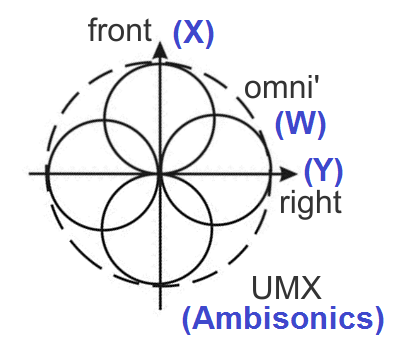
*In fact, in Cooper's theory the transverse cosine microphone is rigged in the opposite sense to Ambisonics so that it's positive-phase lobe is pointing right. (Ambisonic convention is that it points left.) Obviously this is a minor detail and it is ignored in the explanation which follows.
The signals from these microphones in Ambisonics theory are called: W (omni'); X (front-back cosine microphone); and Y (transverse-rigged cosine microphone). Ideally, these microphones should be perfectly coïncindent, but practical microphones are rigged as close as possible to one another.
Cooper's codification of these three microphone signals in UMX theory is somewhat different to Gerzon's presentation. Cooper's essential idea is that, if the signal from the front-back cosine microphone (X) is subjected to a 90° phase transformation (a Hilbert transform) with respect to the signal from the left-right (Y) microphone, the two perpendicular cosine microphone outputs when summed together create a single EMF which encodes the angle of the incident sound.
If we use the notation "j" to represent a 90° phase transform and the W,X,Y notation from Ambisonics, we can express the output of this composite microphone like this,
Y + jX
Consider a sound circling the microphone array, starting at a position of the standard mathematical convention for 0° - the full right (center-right) position. In this position, the front-back cosine microphone will have zero output, but the sound will be directly on-axis for the transverse figure-of-eight. This produces the signal which is in phase with the reference phase of the omnidirectional microphone W.
Now, consider the sound has moved to the centre-front. In this situation, the transverse cosine microphone will contribute nothing to the output but the sound will be directly on-axis for the front-back cosine microphone. From an amplitude point of view, the signal will be the same as when the sound as at the centre-right, but the phase will will differ from that of the omnidirectional (W) microphone by 90° (due to the j term).
A quarter turn more (to the center-left position) and the front-back microphone will contribute nothing, but the transverse microphone will output a signal 180° different to the signal when the sound was at the 0° position. So this goes on; the result being a microphone signal which encodes the direction of the incident sound in its phase-response - a very clever idea.
Because we need a shorthand term for this composite microphone in which the signal magnitude (remember that sin²θ + cos²θ = 1) is the modulus of a complex quantity, and the argument, the incident direction, we'll call it the COoper Direction Encoding Microphone (CODEM) although this is not a term recognised in the literature.
In BMX (the basic system), the two quadraphonic encoded left/right signals are generated by adding and subtracting the CODEM signal from that of the reference omni' (W), as follows,
Left = W - (Y + jX)
Right = W + (Y + jX)
In the decoder, the sum of the left and right signals re-creates the original omni' signal - just as we would want from a mono signal. (In fact, UD-4 records are the only quadraphonic discs which are entirely mono compatible). The difference signal (L - R) holds both left-right and front-back information in quadrature. This information is decoded in a similar way to other quadraphonic matrix formats.
The format of the Tertiary level (TMX) signal in UMX (and thus on the UD-4 discs) is the complex conjugate of the combined figure-of-eight microphones, that's to say,
TMX helper = Y - jX
(The complex conjugate of a complex number is the number with an equal real part and an imaginary part equal in magnitude but opposite in sign.)12 . The presence of this conjugate of the normal CODEM signal (CODEM∗) enables the separate W, X and Y signals to be matrixed out and thereby create the equivalent of an Ambisonic sound-field, because,
½ (Y + jX) + ½ (Y - jX) = Y and,
½ (Y + jX) - ½ (Y - jX) = jX
In fact, as we shall see, this Tertiary (TMX) signal is bandwidth-limited in the UD-4 application such that,
TMX helper = H(ω) . (Y - jX)
So, actually, full Ambisonics may only be achieved at low and middle frequencies. Cooper et al. cite experiements which demonstrate that wideband signals are not necessary for realistic quadraphonic reproduction.8
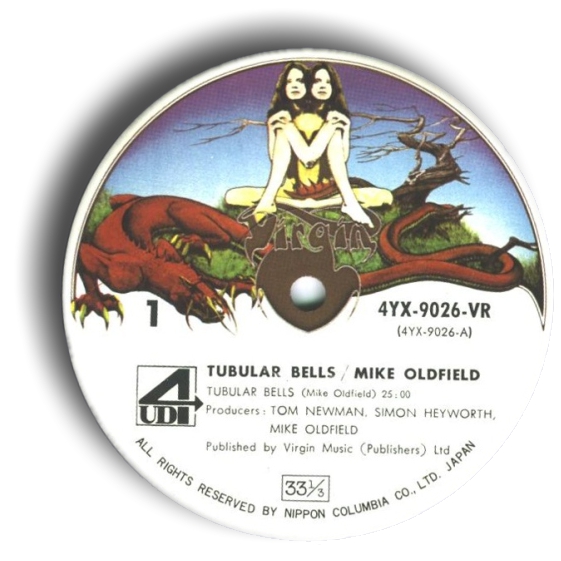
UD-4 (UMX) also provides for a further signal to raise the fidelity of the reproduction of the recorded azimuth of the sound-sources. This involves further microphone signals. Gerzon's mathematical analyisis reveals this step as unnecessary and unwanted 9.
Certainly, contemporary commentary was that there was a diminishing return at the upper end of the UMX scale. Adrian Hope reporting on the performance of the BMX, TMX, QMX heirachy at a demonstration of the UD-4 system at the 1975 SONEX exhibition had this to say,
....... the difference between the results obtained by decoding only the base, or BMX, matrix and those obtained by demodulating either, or both, of the directional signals to produce TMX or QMX is far more dramatic than the change from TMX to QMX.10
Our own practical experiments in deriving the TMX and QMX signals from a UD-4 tend to confirm this. In straightforward energy terms, the QMX signal is some 6dB below the TMX signal. Given that the signal-to-noise ratio of signals derivd from records approaching 50 years old is not great, we have not pursued the decoding of UMX beyond the Tertiary or TMX level.
Cooper proposed scenarios for the incorporation of these helper signals in various media: tape, radio transmissions and phonograph records. In the case of UD-4 phonograph records8, the extra two "helper" signals to raise BMX, initially to TMX, and ultimately to QMX, are recorded on the disc as the FM modulation of two high-frequency subcarriers in a very similar way to the manner in which front-back quadraphonic information is recorded on a CD-4 disc.
Indeed, our experiments have shown that the TMX and QMX subcarrier signals may successfully be demodulated with our software CD-4 demodulator.
An example of the decoded FM subcarrier signals from a UD-4 disc is given here:
The audio clearly demonstrates that these helper signals are not full bandwidth: they are limited to about 3kHz. Cooper et al. maintained that this limitation was advantageous because the curtailed bandwidth would reduce some of the technical requirements on the successful replay of UD-4 discs - at least, compared with CD-4. Cooper believed it might even permit a lower carrier frequency and perhaps sidestep the need for a special stylus shape.8 Although - with the benefit of hindsight - we would dispute this last conjecture for reasons given here regarding the longevity of CD-4 records..
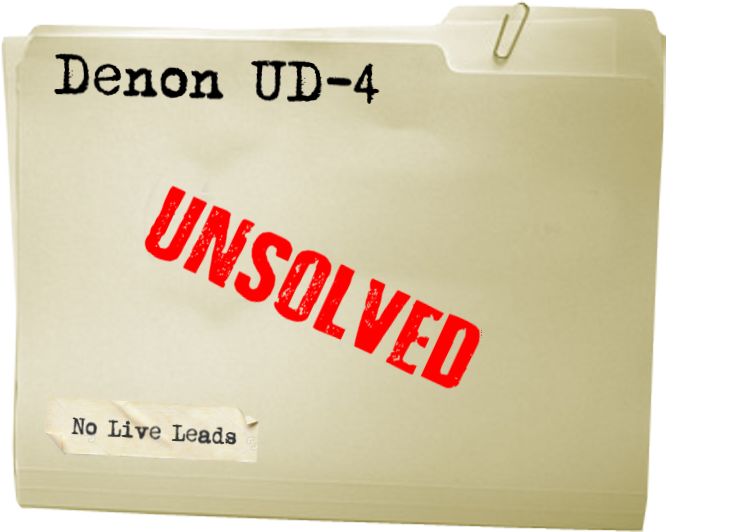 It has seemd to us that a UMX decoder for UD-4 records ought to be possible since we developed our JVC's CD-4 decoder..... But the case was cold.
It has seemd to us that a UMX decoder for UD-4 records ought to be possible since we developed our JVC's CD-4 decoder..... But the case was cold.
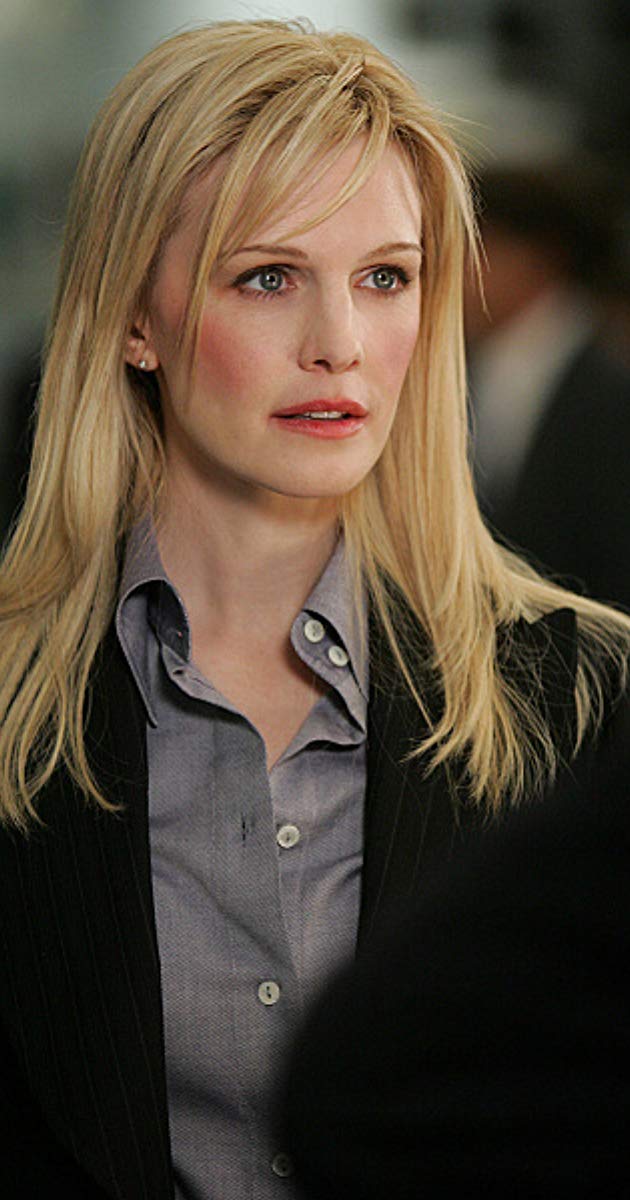 No proper specification of the commercial UD-4 discs appears to exist. (There are JPRA and EIAJ industry standards from 1974 discussed on-line, but with no details or references.) Cooper's papers4,8 are theoretical and general and have their fair-share of contradictions and errors. They are of limited use in trying to design a practical decoder.
No proper specification of the commercial UD-4 discs appears to exist. (There are JPRA and EIAJ industry standards from 1974 discussed on-line, but with no details or references.) Cooper's papers4,8 are theoretical and general and have their fair-share of contradictions and errors. They are of limited use in trying to design a practical decoder.
Few details of how exactly the hierarchical "helper" signals are recorded on the released, commercial discs appears available (beyond a 1975, generalist's article in Studio Sound magazine)13. And very limited technical paperwork on the sparse range of commercial equipment produced to decode these discs exists or survives.
The development of a practical decoder requires that we know details of: the matrixing of the modulation; the deviation corresponding to standard recording level; noise-reduction characteristics; preëmphasis applied; and so on. Cooper's paper8 presents tables of some of this information, but it is clearly incorrect or was outdated by the time the practical system was brought to market. For example, the FM carriers are specified (in the first instance) as 26kHz, yet the carriers recorded on 4OX-9001 (the very first commercial UD-4 release) are very definitely 30kHz. Moreover, according to Cooper, the helper audio is also RIAA preëmphasised. But listening reveals that this clearly isn't the case.
Thankfully, due to the very helpful contributions from the quadraphonic cognoscente, we were able, like Agent Lilly Rush, to open the cold-case on UD-4 demodulators. In the end, the development involved some inspired (and a lot of not-so-inspired!) inductive reasoning and experimentation. We should especially like to thank: Andrew Birt; Clemens van Driel11; and Kirk Bayne for their invaluable help and encouragement.
1. The development of a compatible 4-2-4 quadraphonic matrix system, B.B.C. Matrix H. D.J. Meares and P.A. Ratliff, E.B.U. REVIEW No. 159 - OCTOBER 1976
2. Rogers in Diffusion of Innovation (New York: Free Press 2003) tells us that by 1975 quad equipment sales were only running at 5% of hi-fi sales and that the number of quadraphonic recordings never got close to 5% of the titles available on the market. By 1975, the record companies that had offered four-channel products began dropping them, and stereo equipment retailers began selling off their inventories at a discount.
3. There was a kit decoder made available from a BBC design published in Wireless World magazine: Purpose-built Matrix H decoder. Shorter, G. Wireless World, June 1977. But this was very impractical with nothing but the chipset from Sansui and extra boards for the modifications to a Variomatrix QS decoder on separate PCBs. There can't have been many constructors.
Better, was the NRDC-AMBISONIC decoder (designed by Michael Gerzon) which featured BBC Matrix H as one of its (many) decoding options. This too was a kit, produced by lntegrex Limited of Burton-on-Trent, after the design was published in Wireless World magazine in July and August of 1977. Whilst a complete kit, this was a complicated device to put together (and very difficult to test). It cost £45 without purchase tax in 1977: a lot of money. It could only have been available to very few people and the design emerged very close to the end of the BBC experiment.
4. Discrete-Matrix Multichannel Stereo. D.H. Cooper & T. Shiga, Journal of the Audio Engineering Society JUNE 1972, VOLUME 20, NUMBER 5.
5. Variomatrix adaptor for System 45J and Matrix H. Gerzon, M. Wireless World, May 1977
6. NRDC surround-sound system. Gerzon, M. Wireless World, April 1977
7. Matrix HJ; technical refinement and political jostling? Wireless World December 1977 p.77
8. QMX CARRIER-CHANNEL DISC. Cooper, D.H. et al. PRESENTED AT THE 45th AES CONVENTION MAY 15 to 18th 1973
9. What’s wrong with quadraphonics. Gerzon, M. Studio Sound, May 1974
10. Two more innovations for the hi-fi addict. New Scientist April 1975 p.81. To what degree Gerzon and the NRDC team was influenced by Cooper's ideas (or vice versa) is not clear. But what we may say with confidence is that, whereas the theory developed by the National Research and Development Corporation (a.k.a. Ambisonics) team had to wait until the late summer of 1977 to see any practical, commercial application (and then as part of the BBC Matrix-H project, see Note. 3), commercial UD-4 records and demodulators were available in 1974. So, UD-4 certainly stole the march on Ambisonics as a practical system by a considerable margin.
11. Pspatial Audio would especially like to thank Clemens van Driel for the supply of the UDA-100 circuit diagram. This appears to be one of the very rare documents which testify to UD-4's brief stay on the planet. Sadly, as so often is the case, the devil is in the detail and that detail is unreadable in the copy, but it did enable us to discover the broad architecture of the decoder.
12. In polar form, the conjugate of the complex number Re jθ is Re -jθ. Cooper's work often uses this notation which can be a bit confusing. There are several notations for the complex conjugate of a complex number. In applied physics and engineering texts, the conjugate of complex number z is usually notated with a low asterisk and reads as z∗.
13. UD-4: the system and its use. Takagi, T. Studio Sound June 1975 pp.42, 43, 48
 Pspatial Audio Home page
Pspatial Audio Home page
For all support issues, go here.
For Pspatial Audio sales, email: sales@pspatialaudio.com
